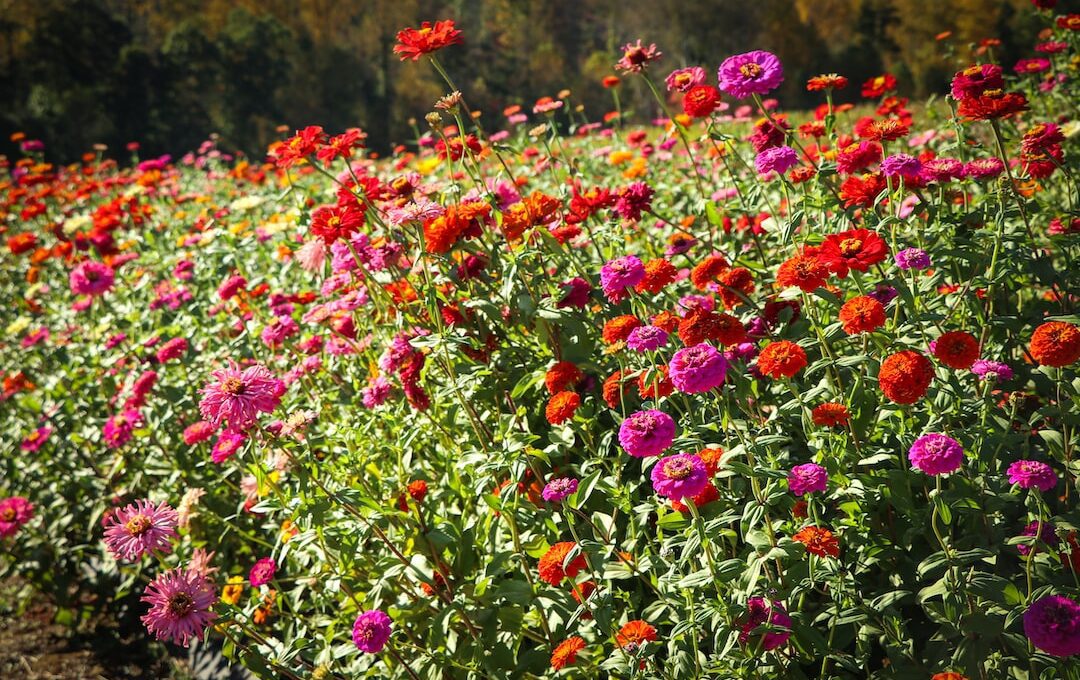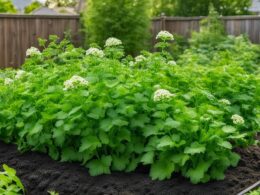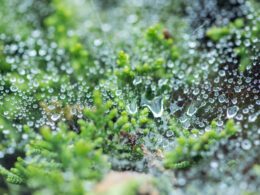Do you love the vibrant colors and cheerful blooms of zinnias? If you want to enjoy these beautiful flowers for as long as possible, then potted zinnias are the way to go. With proper care and attention, you can extend their blooming period and keep them looking their best.
In this article, we will discuss the key techniques to ensure the longevity of your potted zinnias.
First and foremost, proper watering is essential. Make sure to water your zinnias regularly, keeping the soil evenly moist but not waterlogged.
Providing adequate sunlight is also crucial. Place your potted zinnias in a location where they can receive at least six hours of direct sunlight each day.
Fertilizing regularly will help your zinnias stay healthy and vibrant. Deadheading, or removing spent blooms, is another important task. This will encourage new blooms and prevent your zinnias from wasting energy on seed production.
Remember to protect your potted zinnias from extreme weather conditions, as they can be sensitive to both heat and cold. Additionally, keep an eye out for pests and diseases, and take appropriate measures to control them.
By following these tips, you can maximize the lifespan of your potted zinnias and enjoy their beauty for a longer period of time. So, get ready to create a stunning display of colorful zinnias in your garden or patio and watch them thrive!
Quick Summary
- Proper watering is essential to the longevity of potted zinnias, as they require moist soil but not waterlogged conditions.
- Zinnias need at least six hours of direct sunlight each day to prevent weak growth and pale blooms.
- Regular fertilizing every two to three weeks with higher phosphorus content helps maintain the health and vibrancy of potted zinnias.
- Removing spent blooms through deadheading encourages new blooms and prevents energy waste on seed production, resulting in a longer-lasting and more vibrant display.
Proper Watering Techniques
Want to keep your potted zinnias blooming beautifully? Let’s talk about the best ways to water them!
Proper watering techniques are essential for the health and longevity of your potted zinnias. To ensure their well-being, it’s crucial to pay attention to watering frequency and soil moisture levels.
Watering frequency is key when it comes to potted zinnias. These vibrant flowers thrive in moist but not waterlogged soil. A good rule of thumb is to water them when the top inch of soil feels dry to the touch. This usually means watering them once or twice a week, depending on the weather conditions. Avoid overwatering, as it can lead to root rot and other fungal diseases.
Monitoring soil moisture levels is also essential. Invest in a moisture meter or simply stick your finger about an inch into the soil to check for moisture content. If it feels dry, it’s time to water; if it feels moist, hold off on watering for a few more days. This will prevent waterlogging and ensure that your zinnias receive just the right amount of hydration.
By following these proper watering techniques, you can keep your potted zinnias thriving and blooming beautifully for a longer duration. So remember, water them regularly but not excessively, and always pay attention to soil moisture levels. Happy gardening!
Provide Adequate Sunlight
To ensure the healthy growth of your potted zinnias, it’s important to choose a suitable location where they can receive adequate sunlight. Place them in a spot that gets at least six hours of direct sunlight per day.
This will help the plants thrive and produce vibrant, colorful blooms.
Choose a suitable location for your potted zinnias
Selecting an appropriate spot for your potted zinnias is crucial in ensuring their longevity. Here are three key factors to consider when choosing a suitable location for your potted zinnias:
-
Sunlight: Place your potted zinnias in an area that receives at least six hours of direct sunlight daily. This will provide them with the energy they need to thrive and produce vibrant blooms.
-
Soil Conditions: Opt for well-draining soil that’s rich in organic matter. This will prevent waterlogging and ensure that the roots have access to the nutrients they need. Avoid heavy clay or compacted soil, as this can lead to root rot and hinder the growth of your zinnias.
-
Safety: Keep your potted zinnias away from any potential hazards like strong winds or areas prone to foot traffic. This will protect them from being knocked over or damaged, allowing them to grow and bloom safely.
By choosing a suitable location with the best soil conditions, you can help your potted zinnias thrive and enjoy their beautiful blooms for an extended period of time.
Ensure they receive enough sunlight for healthy growth
Place your potted zinnias in a sunny spot for healthy growth and watch as their vibrant blooms flourish. Sunlight is crucial for the well-being of your zinnias, as they require at least six hours of direct sunlight each day.
Position them in a location that receives ample sunlight, such as a south-facing window or a sunny patio. Adequate sunlight ensures that your zinnias can photosynthesize, converting light into energy for growth and blooming. Without enough sunlight, your zinnias may become weak and leggy, with pale and sparse blooms.
So, make sure to prioritize their sunlight requirements to ensure their overall health and beauty. Remember, providing sufficient sunlight is essential for your potted zinnias to thrive and bring joy to your space.
Fertilize Regularly
Fertilizing regularly will keep your potted zinnias blooming beautifully for an extended period of time. To ensure the health and longevity of your zinnias, it’s important to understand the fertilization frequency and choose the best fertilizers for your plants.
When it comes to fertilizing potted zinnias, consistency is key. A general rule of thumb is to fertilize every two to three weeks during the growing season. This will provide your zinnias with a steady supply of nutrients to support their growth and vibrant blooms. However, be careful not to over-fertilize, as this can lead to excessive foliage growth and fewer flowers.
To choose the best fertilizers for your potted zinnias, look for options that are specifically formulated for flowering plants. These fertilizers typically have a higher phosphorus content, which promotes flower production. Additionally, consider using slow-release fertilizers, as they provide a continuous supply of nutrients over a longer period of time.
Here’s a helpful table to guide you in selecting the right fertilizer for your potted zinnias:
| Fertilizer | N-P-K Ratio | Application |
|---|---|---|
| Organic | 5-10-10 | Mix into soil before planting |
| Liquid | 10-10-10 | Dilute with water and apply every 2 weeks |
| Slow-release | 14-14-14 | Sprinkle around the base of the plant every 3 months |
By following these fertilization guidelines and using the appropriate fertilizers, you can ensure that your potted zinnias thrive and bloom beautifully for a long time. Happy gardening!
Deadhead Regularly
To keep your potted zinnias looking their best, it’s important to deadhead regularly. By removing spent flowers, you’ll encourage new blooms and prolong the overall blooming period of the plant.
Additionally, be sure to prune any damaged or diseased parts of the plant to promote healthy growth and prevent the spread of any potential problems.
Remove spent flowers to encourage new blooms
Removing spent flowers helps potted zinnias produce a fresh burst of colorful blooms. By taking the time to deadhead regularly, you can encourage growth and increase flower production in your zinnias. Here are three important reasons why removing spent flowers is beneficial:
-
Preventing Disease: Removing wilted and dead flowers helps prevent the spread of diseases that can harm your zinnias. It keeps the plant healthy and strong, allowing it to focus its energy on producing new blooms.
-
Promoting Air Circulation: Deadheading opens up space between the flowers, allowing for better air circulation. This reduces the chances of fungal infections and promotes overall plant health.
-
Enhancing Aesthetic Appeal: Removing spent flowers keeps your potted zinnias looking neat and tidy. It creates a visually pleasing display while encouraging the plant to produce even more beautiful blooms.
By practicing regular deadheading, you can enjoy a longer-lasting and more vibrant display of zinnias in your potted garden. Happy gardening!
Prune any damaged or diseased parts of the plant
Inspect your zinnia plant closely for any damaged or diseased areas that need to be pruned. Pruning is an essential technique to maintain the health and vitality of your potted zinnias. By removing any damaged or diseased parts of the plant, you can prevent the spread of diseases and promote new growth. When pruning, make sure to use clean and sharp tools to avoid further damage. Remember to wear gloves to protect your hands and avoid any potential injuries. To emphasize the importance of pruning, consider the following table:
| Pruning Techniques | Preventing Diseases |
|---|---|
| Remove dead or yellowed leaves | Regularly inspect for signs of diseases |
| Cut back overgrown branches or stems | Dispose of infected plant parts properly |
| Remove spent flowers | Avoid overwatering to prevent fungal diseases |
| Prune to shape the plant | Promote good airflow to discourage diseases |
By following these pruning techniques and preventing diseases, you can ensure the longevity and beauty of your potted zinnia plant.
Protect from Extreme Weather
To protect your potted zinnias from extreme weather, make sure to shield them from strong winds. Strong winds can easily damage the delicate petals and stems of the zinnias, so find a sheltered spot for them.
Additionally, provide shade for your zinnias during hot summer days to prevent them from scorching under the intense heat. This will help to keep your zinnias thriving and looking their best.
Shield potted zinnias from strong winds
Protect your potted zinnias from strong winds to ensure they last longer. Strong winds can cause damage to your delicate zinnias, so take these precautions to keep them safe:
-
Position your pots strategically: Place your potted zinnias in a sheltered area, such as against a wall or near a windbreak, to provide some protection from strong gusts.
-
Use stakes or supports: Secure your zinnias with stakes or supports to prevent them from toppling over in high winds.
-
Create a wind barrier: Consider placing a temporary wind barrier, such as a mesh screen or fabric, around your potted zinnias to shield them from the force of the wind.
-
Bring them indoors if necessary: If the winds are particularly strong, it might be best to bring your potted zinnias indoors until the weather calms down.
By following these steps, you can protect your potted zinnias from strong winds and ensure they stay healthy and vibrant for longer.
Provide shade during hot summer days
Now that you’ve protected your potted zinnias from strong winds, it’s important to also provide them with shade during hot summer days.
Offering shade to your zinnias has numerous benefits. Firstly, it helps prevent the plants from overheating and becoming stressed, which can lead to wilting and even death. Shade also reduces water evaporation from the soil, allowing the plants to retain moisture for longer periods.
To provide shade, you can use various methods such as using shade cloth, placing the pots under a tree or an awning, or even creating temporary structures using umbrellas or canopies. Additionally, consider alternative cooling methods like misting the plants with water or using a fan to create airflow.
By ensuring your potted zinnias have shade and alternative cooling methods, you’re taking proactive steps to safeguard their well-being during scorching summer days.
Monitor for Pests and Diseases
Keep an eye out for any sneaky pests or diseases that might try to invade your potted zinnias and shorten their lifespan. Pest control and disease prevention are essential to ensure the health and longevity of your beautiful flowers.
Regularly inspect your plants for any signs of pests such as aphids, spider mites, or whiteflies. These tiny invaders can quickly multiply and suck the life out of your zinnias. If you spot any pests, remove them manually or use an organic insecticide to keep them in check.
In addition to pests, diseases can also pose a threat to your potted zinnias. Fungal diseases like powdery mildew or bacterial infections can cause wilting, yellowing leaves, and overall decline in plant health. To prevent these diseases, make sure your zinnias have proper air circulation by placing them in a well-ventilated area. Avoid overwatering, as excess moisture can create a favorable environment for fungal growth. If you notice any signs of disease, promptly remove the affected parts and dispose of them properly to prevent spreading.
By being vigilant and taking proactive measures, you can protect your potted zinnias from pests and diseases. Remember to regularly monitor your plants, practice good hygiene, and provide them with optimal growing conditions. With proper care, your zinnias will thrive and bring joy to your garden all season long.
Is the Lifespan of Potted Petunias Similar to Potted Zinnias?
The potted petunia lifespan can vary based on various factors such as care and environment. Similarly, potted zinnias also have their own lifespan, depending on similar conditions. Understanding the specific needs of each plant will help ensure their longevity and maximize enjoyment of these vibrant blooms.
Extend the Blooming Period
To extend the blooming period of your potted zinnias, you can pinch back the plants to promote bushier growth. This will encourage more flowers to bloom and prolong the overall blooming time.
Additionally, consider re-potting or dividing the plants to rejuvenate them and stimulate new growth. By following these simple steps, you can enjoy the vibrant colors of your zinnias for an extended period of time.
Pinch back the plants to promote bushier growth
Pruning potted zinnias encourages a fuller and more robust growth, resulting in bushier plants that’ll dazzle your garden for a longer period of time. Here are some simple steps to promote flowering and encourage branching in your zinnias:
-
Start by pinching off the top inch of the plant when it’s about 6 inches tall. This’ll promote branching and prevent the zinnias from getting tall and leggy.
-
As the plant grows, continue to pinch off the top inch of each stem every few weeks. This’ll encourage new growth and prevent the plant from getting too tall.
-
Regularly remove any dead or faded flowers. This’ll help redirect the plant’s energy towards producing new blooms.
-
Make sure to use clean and sharp pruning shears to avoid damaging the plant. Disinfect the shears before and after each use to prevent the spread of diseases.
By following these simple pruning techniques, you can enjoy a longer blooming period and a more vibrant display of zinnias in your garden.
Consider re-potting or dividing the plants to rejuvenate them
Consider giving your zinnias a fresh start by repotting or dividing them. This will help rejuvenate their growth and ensure a healthier and more vibrant display in your garden.
Re-potting your potted zinnias can have numerous benefits. By providing them with fresh soil, you eliminate any potential diseases or pests that may have accumulated in the old potting mix. Additionally, the increased space allows the roots to spread and access more nutrients, promoting healthier growth.
When dividing your zinnias, you’re essentially creating new plants from the existing ones. This not only helps rejuvenate their growth but also allows you to propagate more zinnias for your garden. To divide them, gently separate the root ball into smaller sections, making sure each section has enough roots and foliage. Replant these divisions in individual pots or directly in the garden, and watch as your zinnias thrive with renewed vigor.
Enjoy the Beauty of Potted Zinnias
Appreciate the vibrant colors and variety of potted zinnias as you showcase these stunning flowers in your home.
Share your love for the beauty of potted zinnias with others, inviting them to marvel at the array of colors and shapes.
Let the vibrant blooms of zinnias bring joy and beauty into your space, brightening up any room with their lively presence.
Appreciate the vibrant colors and variety of zinnias
Enjoy the vibrant colors and wide range of zinnias that’ll surely bring a burst of life and beauty to your space!
Zinnias come in various shades of red, pink, orange, yellow, and even purple, making them a delightful addition to any garden or potted arrangement. These flowers not only add visual appeal but also carry symbolic meanings of endurance and remembrance.
To cultivate zinnias successfully, it’s important to provide them with well-drained soil, ample sunlight, and regular watering. Remember to water the root zone and avoid wetting the leaves to prevent diseases. Deadheading spent blooms will encourage continuous flowering.
With proper care, potted zinnias can last for several weeks, allowing you to enjoy their vibrant colors and uplifting presence for an extended period.
So go ahead and bring the joy of zinnias into your space!
Share your love for these stunning flowers with others
Spread the beauty and symbolism of zinnias by gifting bouquets to your loved ones or creating stunning floral arrangements for special occasions. Here are some ideas to help you share your love for these stunning flowers with others:
-
Share gardening tips: Help your friends and family cultivate their own zinnias by providing them with useful gardening tips. From soil preparation to watering techniques, share your knowledge to help them successfully grow their own vibrant zinnias.
-
Create creative zinnia arrangements: Experiment with different colors and varieties of zinnias to create eye-catching floral arrangements. From simple bouquets to intricate centerpieces, let your creativity shine and inspire others to appreciate the beauty of zinnias.
-
Host a zinnia-themed gathering: Organize a zinnia-themed gathering where you can showcase your zinnia arrangements and educate others about these stunning flowers. This can be a fun and educational way to bring people together and foster a love for zinnias in a safe and enjoyable environment.
By sharing your passion for zinnias, you can spread joy, beauty, and a love for gardening to those around you.
Frequently Asked Questions
Can potted zinnias survive indoors?
Yes, potted zinnias can survive indoors with proper care. Indoor zinnia care involves providing them with enough sunlight, regular watering, and well-draining soil. Choosing potted zinnias is a safe option as they can brighten up your indoor space.
How often should I water my potted zinnias?
To ensure the health of your potted zinnias, water them when the top inch of soil feels dry. Overwatering can lead to root rot and yellowing leaves, so watch for signs like wilting or soggy soil.
What is the best type of fertilizer for potted zinnias?
The best organic fertilizer for potted zinnias is a slow-release fertilizer. It provides long-lasting nourishment without the risk of overfeeding, ensuring the safety and health of your plants.
Can potted zinnias be grown in shady areas?
Yes, potted zinnias can be grown in shaded areas, but they prefer full sun. Make sure they get at least 6 hours of sunlight. In winter, protect them from frost and provide proper care to ensure their survival.
How do I prevent pests and diseases from affecting my potted zinnias?
To prevent pests and diseases in your potted zinnias, use organic pest control methods. Keep your plants healthy by providing proper sunlight, water, and air circulation. Regularly inspect for pests and promptly treat any issues to ensure the safety of your plants.
Conclusion
So, now you know how to care for potted zinnias and extend their blooming period. Remember to water them properly, provide adequate sunlight, and fertilize regularly.
Deadhead the flowers and protect them from extreme weather. Keep an eye out for pests and diseases and take immediate action if needed.
By following these tips, you can enjoy the vibrant beauty of potted zinnias for a longer period of time. Happy gardening!









